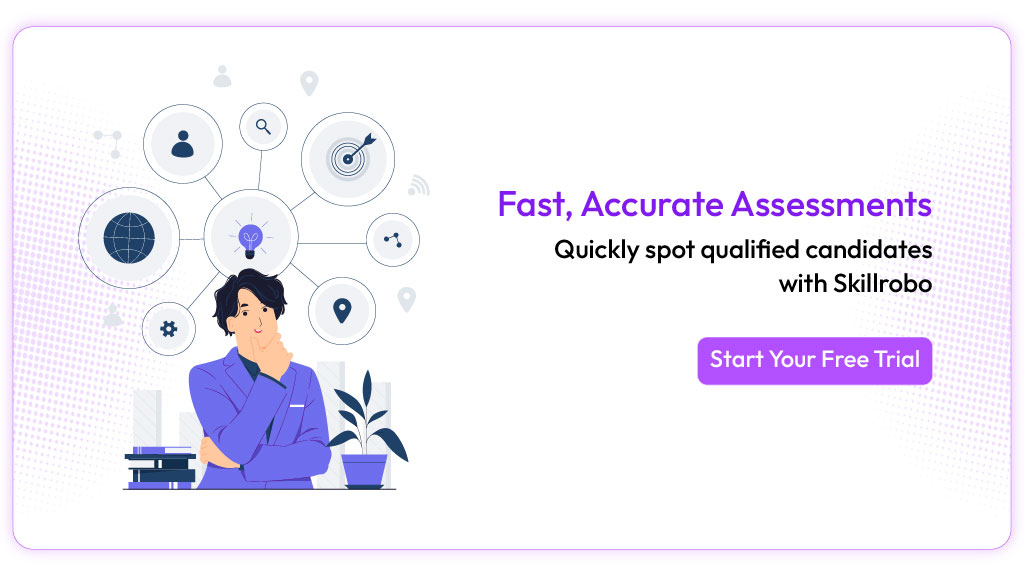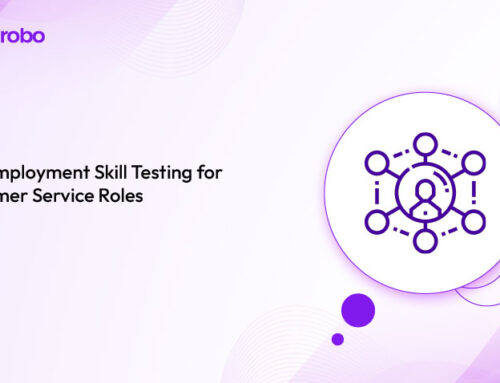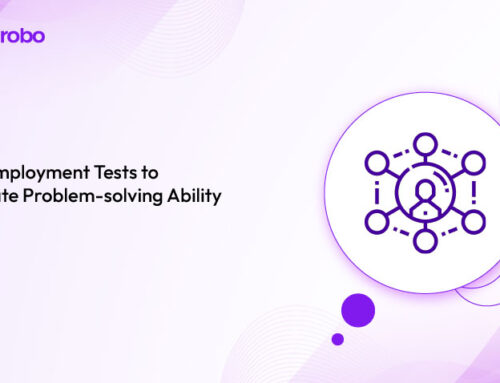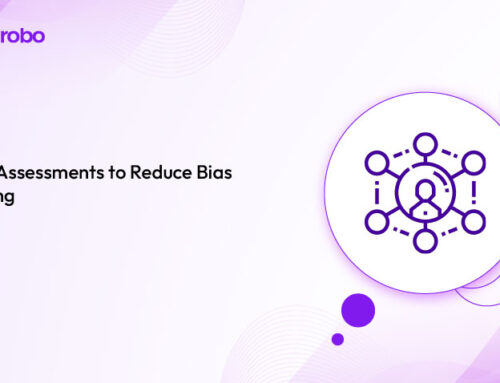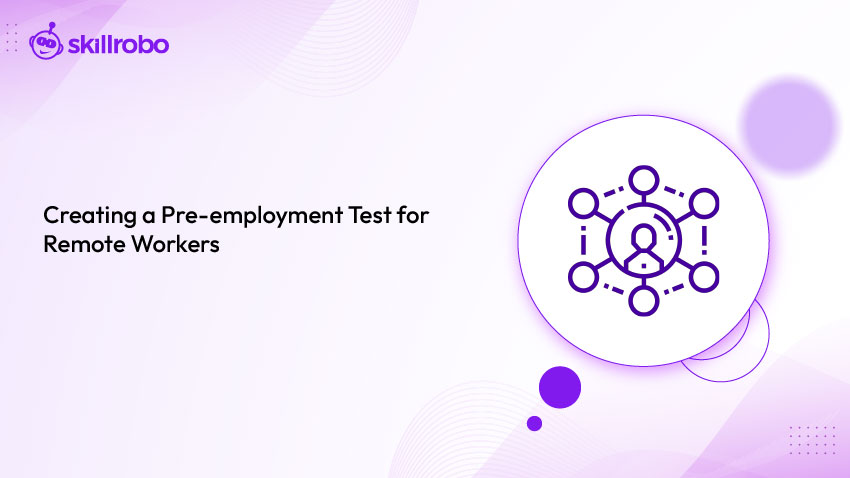
Key Takeaways
- Remote tests reveal self-discipline and tech-savvy, ensuring hires excel in virtual roles with confidence.
- Tailored evaluations boost hiring precision, spotting candidates who thrive solo for distributed team success.
- AI-driven tools craft sharp assessments, streamlining recruitment to find top remote talent swiftly.
- Fair designs eliminate bias, welcoming diverse hires for equitable global virtual team-building.
Why Remote Testing Is Essential
Hiring remote workers is like picking a captain for a ship at sea—you need someone who steers steady without a crew nearby. Resumes tout skills, but can that candidate manage tasks alone or align teams across time zones? Interviews show polish, not virtual grit. Pre-employment tests close this gap, probing traits like autonomy and digital fluency vital for distributed work. A 2023 study found that 75% of remote hiring success stems from targeted assessments. Testing builds teams that don’t just connect—they drive results, syncing seamlessly from anywhere.
Benefits of Remote Assessments
Remote work isn’t just about logging in—it’s about thriving without a desk or water cooler chats. Assessments reveal who’s wired for virtual success, cutting the risk of hires who falter online. They go beyond resumes, spotlighting talent who keep projects humming and teams tight, even oceans apart. From slashing training time to boosting output, these tests offer HR a clear edge, ensuring every hire adds value fast in roles like support, analysis, or leadership, where virtual excellence defines the game.
1. Drives Virtual Productivity
Self-starters keep remote workflows alive. Tasks like sorting a packed inbox show who delivers without prodding. A firm once lost time to a hire needing nudges—tests catch independent doers. This fits roles like coordinators or analysts, where solo output is critical. Spotting disciplined hires early ensures deadlines are met with minimal oversight, lifting team efficiency. Productivity gains translate to faster projects and happier clients, building a workforce that powers through virtual challenges from any location and self-management skills.
2. Cuts Onboarding Costs
Tech-savvy hires hit the ground running. Scenarios testing platform use—like navigating project tools—reveal who adapts fast. Slow learners drag training, burning budgets. For sales or service roles, quick integration sparks early wins. A test-focused hire skips weeks of ramp-up, saving resources. This keeps onboarding lean, letting newbies contribute pronto, vital for remote setups where delays ripple across global teams. Cost savings and swift starts boost morale, ensuring virtual operations stay agile and competitive.
3. Fosters Team Unity
Clear communicators bind scattered teams. Tasks like drafting async updates show who aligns groups effortlessly. Vague messages breed chaos, stalling collaboration. A firm gained trust by hiring sharp connectors, key for client leads or managers. Tests catching this ensure hires unite teams, even remotely. This builds crews that sync across time zones, driving projects with clarity and reducing friction, ensuring virtual bonds rival in-person ones for roles needing tight coordination communication skills.
Core Components of Effective Tests
Crafting a remote test is like building a bridge—every piece must lock in to carry the load. These assessments need to mirror virtual work, probing skills like focus and adaptability in real-world contexts. From job-specific challenges to smart tech, the right components ensure tests don’t just screen—they predict who’ll thrive, helping you shape teams that excel in roles from tech to operations, no matter where they log in from.
1. Job-Relevant Scenarios
Tests must echo remote challenges—like a retailer’s ticket surge. A major US retailer uses scenarios like resolving client chats to pick reps who handle virtual pressure, ensuring hires fit daily demands. Generic tasks pass flops who falter online. This guarantees candidates tackle issues they’ll face, from data tasks to team syncs, proving they’ll deliver without hand-holding. It’s the backbone for spotting talent ready for real workloads in any remote role remote work assessments.
2. Flexible, Inclusive Formats
Candidates use phones or old laptops—tests need to flex. Mobile-friendly interfaces for tasks like scheduling open doors for all. A clunky platform once blocked rural talent—inclusive formats fix that. This suits global roles like marketing or support, welcoming diverse applicants. By cutting tech barriers, you let skills shine, not gear, ensuring no star is missed due to shaky Wi-Fi or dated devices, building teams with varied strengths for virtual success.
3. Tech-Powered Precision
Smart tools make tests sharp. AI crafts role-specific challenges—like etiquette for assistants—while analytics rank traits like resilience. Skillrobo delivers, streamlining hiring with Seyarc AI precision. Proctoring ensures trust, catching sneaky moves. This fits roles like analysis or coordination, where clean data counts. Tech scales for big pools or remote candidates, giving insights you can bank on to pick hires who excel, no matter their setup or location.
Tips for Flawless Execution
A test is only as good as its rollout—sloppy ones lose talent, sharp ones win stars. These tips help you craft assessments that catch remote-ready hires without hiccups. From clear designs to global fit, they ensure your process runs smoothly, spotlighting candidates who’ll thrive in virtual roles like project leads or tech, setting your hiring apart in a digital-first world.
1. Align with Real Work
Design challenges around virtual tasks—like managing Slack threads. Irrelevant tests, like puzzles for planners, miss the mark. A firm lost hires to off-base tasks—job-focused ones won talent. Ask teams about daily hurdles, then build tests. This ensures candidates prove skills they’ll use, from tool navigation to async plans, so you know they’ll excel without retraining, saving time and ensuring fit for any remote role streamlining recruitment.
2. Simplify the Experience
Complex interfaces frustrate—clean layouts keep the focus on ability. Easy navigation for tasks like drafting reports cuts tech woes. A messy test sank scores—simplicity boosts completion. Offer practice runs to ease nerves, especially for diverse pools. This fits roles like support or leads, where success hinges on skill, not system fights, ensuring candidates shine and landing hires who dive in with confidence and clarity from their first virtual day.
3. Offer Timing Flexibility
Time zones clash—tight deadlines exclude talent. A 24-hour window for tasks like email prioritization fits varied lives. A firm gained stars by loosening clocks—flexibility draws performers. This suits global roles like sales or engineering, lifting participation. Clear, fair deadlines let candidates deliver their best, ensuring you catch remote talent who balance work and life smoothly, building teams that adapt to any virtual rhythm.
Real-World Impact
Tests shine when they solve actual hiring puzzles, catching hires who make remote work click across industries. These examples show how assessments deliver, offering models to tailor for your needs, from retail to operations, ensuring teams drive results no matter where they’re based.
1. Retail’s Virtual Wins
Retail needs digital agility. A major US retailer tests reps with scenarios like handling online complaints and catching hires who keep clients happy remotely. Weak communicators lose trust, tanking sales. This fits service or inventory roles, ensuring candidates manage digital demands, from rush orders to chat support. It builds teams that drive loyalty and revenue, keeping operations seamless without in-person oversight, and ensuring clients stay satisfied across virtual touchpoints.
2. Tech’s System Uptime
Tech demands precision. A major US tech firm uses tasks like troubleshooting workflows to pick engineers who prevent crashes remotely. Poor hires let glitches spread, costing uptime. This suits development or analytics roles, catching candidates who master complex setups, from cloud tools to async fixes. It ensures teams keep systems humming and projects on track, delivering reliable solutions that fuel innovation, no matter where they log in candidate assessment tools.
3. Operations’ Efficiency Gains
Operations thrive on lean thinking. Tests asking candidates to optimize schedules—like delivery routes—show who streamlines smartly. A firm cuts costs with these hires, boosting output. Slow solvers clog flows, hiking expenses. This works for logistics or planning roles, spotting candidates who rethink processes effectively. It builds tight teams that hit targets remotely, ensuring operations stay competitive, even across global supply chains or dispersed locations.
Overcoming Potential Hurdles
Even great tests hit snags—bias, complexity, or trends can derail them. Addressing these keeps your assessments inclusive and sharp, ensuring they deliver talent who stick. Here’s how to dodge pitfalls and hire right for virtual success.
1. Stamp Out Bias
Bias—like jargon-heavy tasks—blocks stars. Neutral scenarios, like prioritizing workloads, let all shine. A biased test lost diverse hires—fair design fixes that. Vet questions for cultural or tech leanings, ensuring equity. This suits roles like marketing or support, building varied teams. Inclusive tests ensure global talent shines, catching remote hires who bring fresh perspectives without unfair barriers and eliminating bias.
2. Streamline Complexity
Dense tests—like tricky scenarios—push talent away. Clear tasks, like drafting plans, balance rigor and ease. A tough test cut completion—simplicity brought hires back. Provide clear guides to focus on skills, not confusion. This fits any role, from analysis to coordination, ensuring candidates show their best. Streamlined tests keep engagement high, catching remote-ready hires who tackle challenges without getting lost in the process.
3. Stay Trend-Ready
Update tests with tasks on modern platforms to stay current. A firm lagged with old tech—fresh tasks won talent. Track trends like async work to align assessments. This prep hires for roles like tech or project leads, ensuring they handle new demands, keeping teams agile and competitive in a fast-changing virtual world identifying Dark Triad traits.
Conclusion
Pre-employment tests for remote workers redefine hiring, spotlighting talent who master virtual challenges with discipline and clarity. By mirroring real demands, they catch hires who sync globally, drive efficiency, and fit your vision, building teams that don’t just work—they soar.
From smart scenarios to trend-ready updates, each step sharpens your recruitment edge. With platforms like Skillrobo streamlining the process, you’re set to craft a workforce that excels remotely. Ready for game-changers? Sign up today to shape your ideal virtual team.

